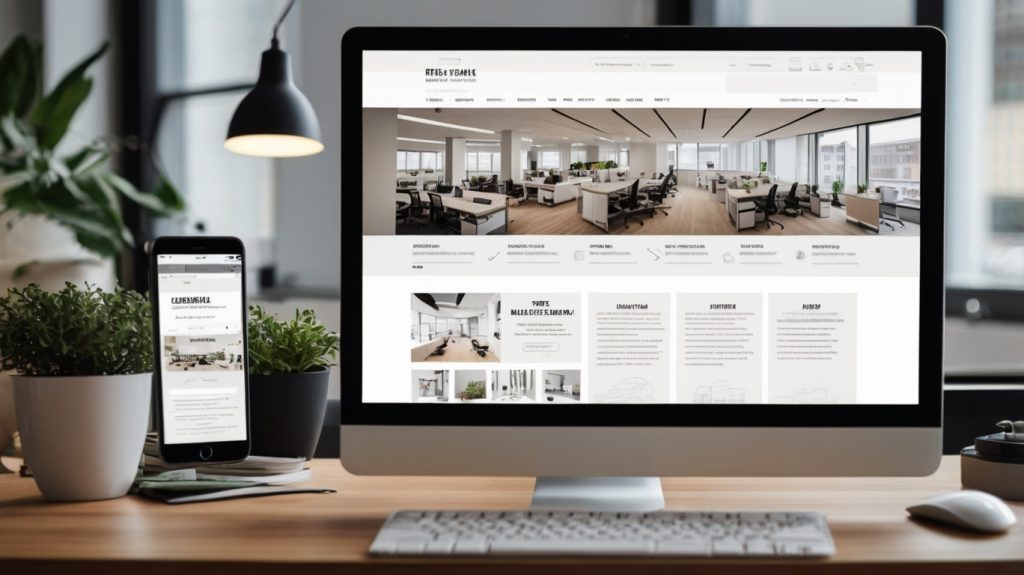
Having a good business website in 2025 is a key part of your brand, your customer experience, and your marketing strategy. Whether you’re building from scratch or refreshing an older site, knowing what features matter now will help you stay ahead.
Modern websites need to build trust, load quickly, work on all devices, and support your business goals from day one. In this guide, we’ll break down the must-have features and web design best practices that define a good business website today.
Table of Contents
ToggleWhy Website Standards Have Changed
Technology and user expectations evolve quickly. What passed as professional website design a few years ago may now seem dated or difficult to use. Businesses that keep up with current design standards are more likely to gain trust, rank better on search engines, and convert visitors into customers.
In 2025, good design is about creating a seamless, intuitive experience across all devices, taking into account accessibility, speed and clarity at the core.
Essential Business Website Features
Every good business website shares a few core traits. These aren’t just “nice to have” they’re expected by users and search engines alike.
Here’s what your site should include:
Clear navigation so users can find what they need quickly
Strong calls to action guiding visitors toward next steps
Fast loading times for better experience and SEO
Mobile-first design that adapts seamlessly to phones and tablets
Trust signals such as reviews, testimonials, and secure payment badges
Up-to-date content that reflects your current offerings and brand
Easy-to-find contact details or enquiry forms
These features form the foundation of any effective online presence.
Mobile-First Design is the New Standard
If your website doesn’t work perfectly on a phone, you’re already losing business. In 2025, mobile-first design isn’t optional. It’s the baseline.
This means starting with the mobile layout when designing, then scaling up for larger screens. It also means prioritising:
Touch-friendly buttons and menus
Fast page loading on 4G or 5G
Minimal pop-ups or distractions
Readable text without zooming
Mobile-first is also a key factor in how Google ranks your site.
Build Trust Through Strong Website Trust Signals
Trust is everything online. If your site looks outdated or unclear, visitors may leave within seconds. A good business website uses trust signals to build confidence quickly.
These include:
Testimonials or case studies showing real customer success
Professional design that reflects your brand’s quality
Clear privacy policies and terms
HTTPS encryption and security badges
Visible contact details, including physical address or phone number
Even subtle design choices, like consistent branding, tidy layouts and no spelling errors, help show you’re serious and credible.
Usability Is Key to Conversion
Good design is invisible. When a site is usable, visitors don’t have to think too much, they just move smoothly toward their goal.
Website usability means:
Clear layouts with logical flow
Consistent buttons and menus
Easy-to-scan pages with headings and spacing
No confusing jargon or broken links
Users expect fast, frictionless experiences. If your site causes frustration, they’ll leave, and may not come back.
Accessibility Is No Longer Optional
An accessible website means everyone can use it, including people with disabilities. It’s also a legal and ethical necessity for many businesses.
Features that improve accessibility include:
Text alternatives for images
Keyboard navigation
Proper heading structures
High contrast text for readability
Avoiding flashing animations or autoplaying media
Not only does accessibility expand your reach, but it’s also considered best practice for professional website design.
SEO-Friendly Design from the Ground Up
A good business website won’t help much if no one can find it. That’s why SEO-friendly design is essential.
It includes:
Clear, descriptive page titles
Structured heading tags (H1, H2, H3)
Fast loading speeds
Mobile optimisation
Descriptive image alt text
Clean URLs and internal linking
Search engines reward well-structured, relevant websites. When SEO is built in from the start, your site is better positioned for long-term growth.
Design That Supports Your Business Goals
Every part of your website should support your goals whether that’s generating leads, making sales or educating your audience. Design decisions should always be guided by what you want visitors to do.
Ask yourself:
Is the most important information easy to find?
Are there clear actions for visitors to take?
Does the design reflect our brand values?
A professional website design connects the dots between what users want and what your business needs.
Keep Your Content Fresh and Relevant
No matter how modern your layout, an out-of-date site can harm your credibility. Fresh content helps show your business is active, engaged and on top of its game.
This could include:
Blog posts or news updates
Current service or pricing information
Seasonal promotions
Up-to-date photos and team bios
Even a simple check every few months can go a long way in keeping your site trustworthy and effective.
Conclusion:
A good business website in 2025 is fast, mobile-friendly, easy to use and built on trust. It speaks to your audience, reflects your professionalism and supports your goals while meeting modern technical standards.
If your current site is falling short in any of these areas, it may be time for a refresh. Investing in a website that follows today’s web design best practices isn’t just about appearances. It’s about giving your business the best possible platform to grow online, get in touch with us if you would like to discuss further.
